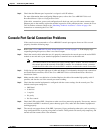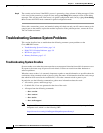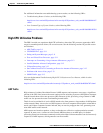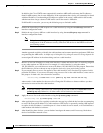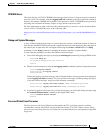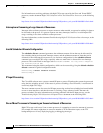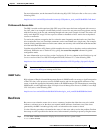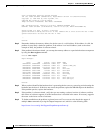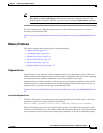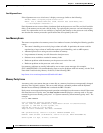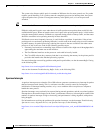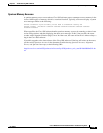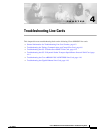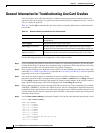
3-15
Cisco uBR10012 Universal Broadband Router Troubleshooting Guide
OL-1237-01
Chapter 3 Troubleshooting PRE-1 Modules
Troubleshooting Common System Problems
Tip The most effective way of using the Output Interpreter tool is to capture the output of the
show stacks and show tech-support commands and upload the output into the tool. If the
problem appears related to a line card, you can also try decoding the show context command.
For more information on troubleshooting bus errors, see the Troubleshooting Bus Error Crashes
document, at the following URL:
http://www.cisco.com/en/US/products/sw/iosswrel/ps1831/products_tech_note09186a00800cdd51.sht
ml
Memory Problems
This section describes the following types of memory problems:
• Alignment Errors, page 3-15
• Low Memory Errors, page 3-16
• Memory Parity Errors, page 3-16
• Particle Pool Fallbacks, page 3-17
• Spurious Interrupts, page 3-18
• Spurious Memory Accesses, page 3-19
Alignment Errors
Alignment errors occur when the software attempts to read or write data using a data size that is not
aligned with the memory address being used. For example, an alignment error occurs when attempting
to read two bytes from a memory address that is not an even multiple of two bytes.
Alignment errors are always caused by a software bug, and can be either correctable or fatal. See the
following sections for more information. Also see the document Troubleshooting Spurious Accesses,
Alignment Errors, and Spurious Interrupts, at the following URL:
http://www.cisco.com/en/US/products/sw/iosswrel/ps1828/products_tech_note09186a00800a65d1.sht
ml
Correctable Alignment Errors
The Cisco IOS software can automatically correct most alignment errors. When it does so, the router
generates a system error message similar to the following:
%ALIGN-3-CORRECT: Alignment correction made at 0x60262478 reading/writing 0x60A9FF5C
Occasional alignment errors do not necessarily require operator intervention, because the Cisco IOS
software can correct these errors and continue with normal operations. However, correcting alignment
errors consumes processor resources and could impact performance if the errors continuously repeat.



